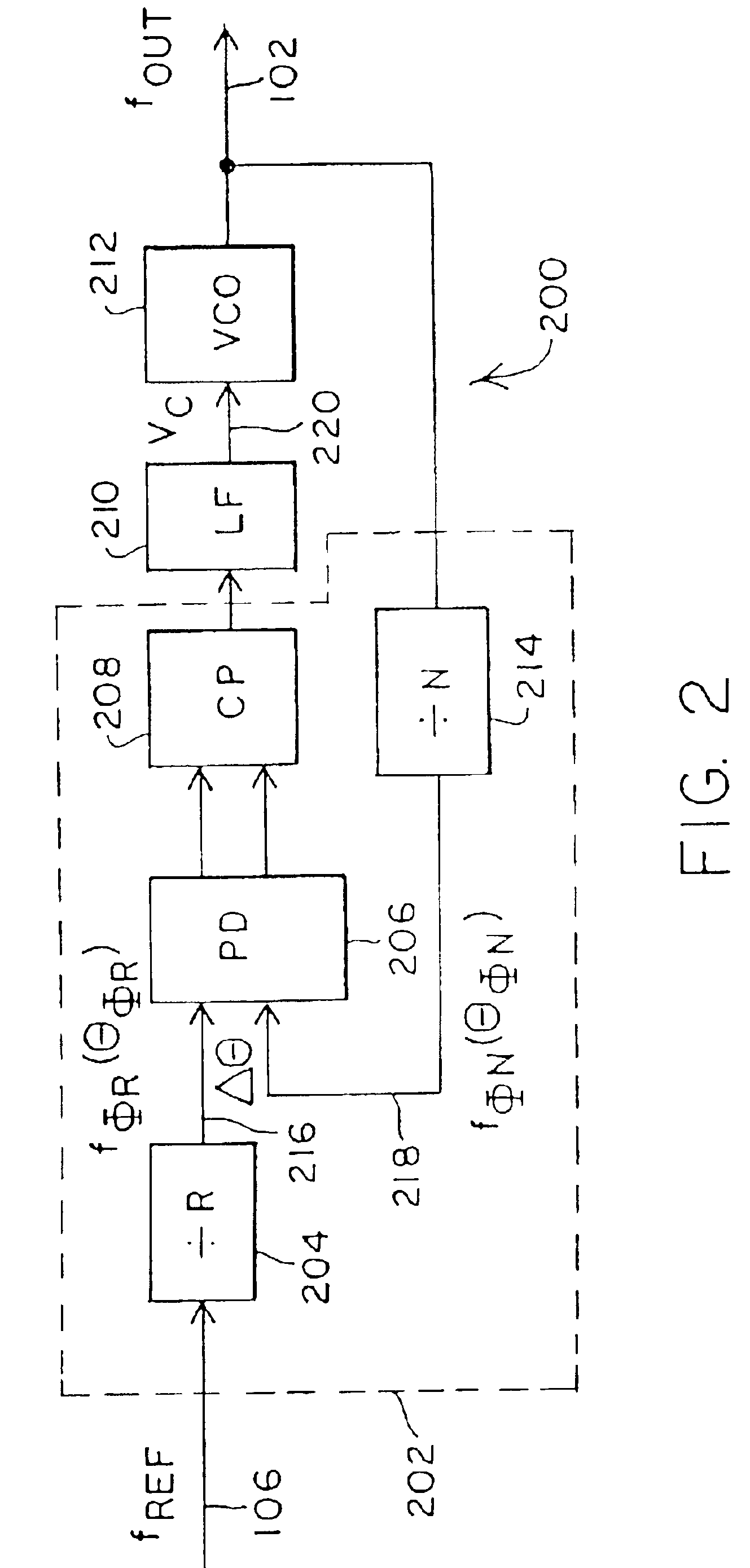Controlled oscillator circuitry for synthesizing high-frequency signals and associated method
a technology of controlled oscillator circuit and high-frequency signal, which is applied in the direction of pulse automatic control, modulation, transmission, etc., can solve the problems of mixing undesired channels, impure frequency sources creating interference in neighboring channels, and design of pll synthesizer solutions
- Summary
- Abstract
- Description
- Claims
- Application Information
AI Technical Summary
Benefits of technology
Problems solved by technology
Method used
Image
Examples
embodiment 1300
[0070]FIG. 13 is a diagram of an embodiment 1300 for achieving a dual band operation for VCO 612. The VCO 612 receives a voltage control (VC) signal 408 and provides an RF output (RFOUT) frequency 102. The external inductor (LEXT) 1306 may be used to determine a first RF output frequency RF1. If a second RF output frequency RF2 is desired, NMOS transistor 1304 may be turned on through the assertion of a high logic level on control node (CTRL) 1302. When this occurs, an additional inductor (LPAR) 1308 will be connected in parallel with the external inductor (LEXT) 1306. In this manner, the output frequency may be selectively centered in two desired bands of frequencies. As the inductance changes, the center frequency of oscillation of the LC tank with the VCO 612 will also change. This approach may also be used to implement any desired number of frequency bands by adding additional switches and inductances. Disadvantages to this approach include the large tolerances associated with m...
embodiment 1400
[0071]FIG. 14 is a block diagram of an alternative embodiment 1400 for achieving dual band operation for VCO 612. A second switch (SW) 1410 is used to select either a first VCO (VCO1) 612A or a second VCO (VCO2) 612B. A first external inductor (LRF1) 1416 may be selected so that the VCO1612A has an RF output (RF1) 1412 centered in a first desired frequency band. Similarly, a second external inductor (LRF2) 1418 may be selected so that the VCO2612B has an RF output (RF2) 1414 centered in a second desired frequency band. The selected frequency is connected through switch 1410 to provide the desired output frequency (fOUT) 102. Power to the non-used VCO 612A or 612B may be shut down, for example by starving the circuit of current from a current generator. This multiple VCO arrangement according to the present invention eliminates potential sources of phase noise by moving the switch (SW) 1410 outside of the LC tank. This approach may also be used to implement any desired number of freq...
PUM
 Login to View More
Login to View More Abstract
Description
Claims
Application Information
 Login to View More
Login to View More - R&D
- Intellectual Property
- Life Sciences
- Materials
- Tech Scout
- Unparalleled Data Quality
- Higher Quality Content
- 60% Fewer Hallucinations
Browse by: Latest US Patents, China's latest patents, Technical Efficacy Thesaurus, Application Domain, Technology Topic, Popular Technical Reports.
© 2025 PatSnap. All rights reserved.Legal|Privacy policy|Modern Slavery Act Transparency Statement|Sitemap|About US| Contact US: help@patsnap.com



